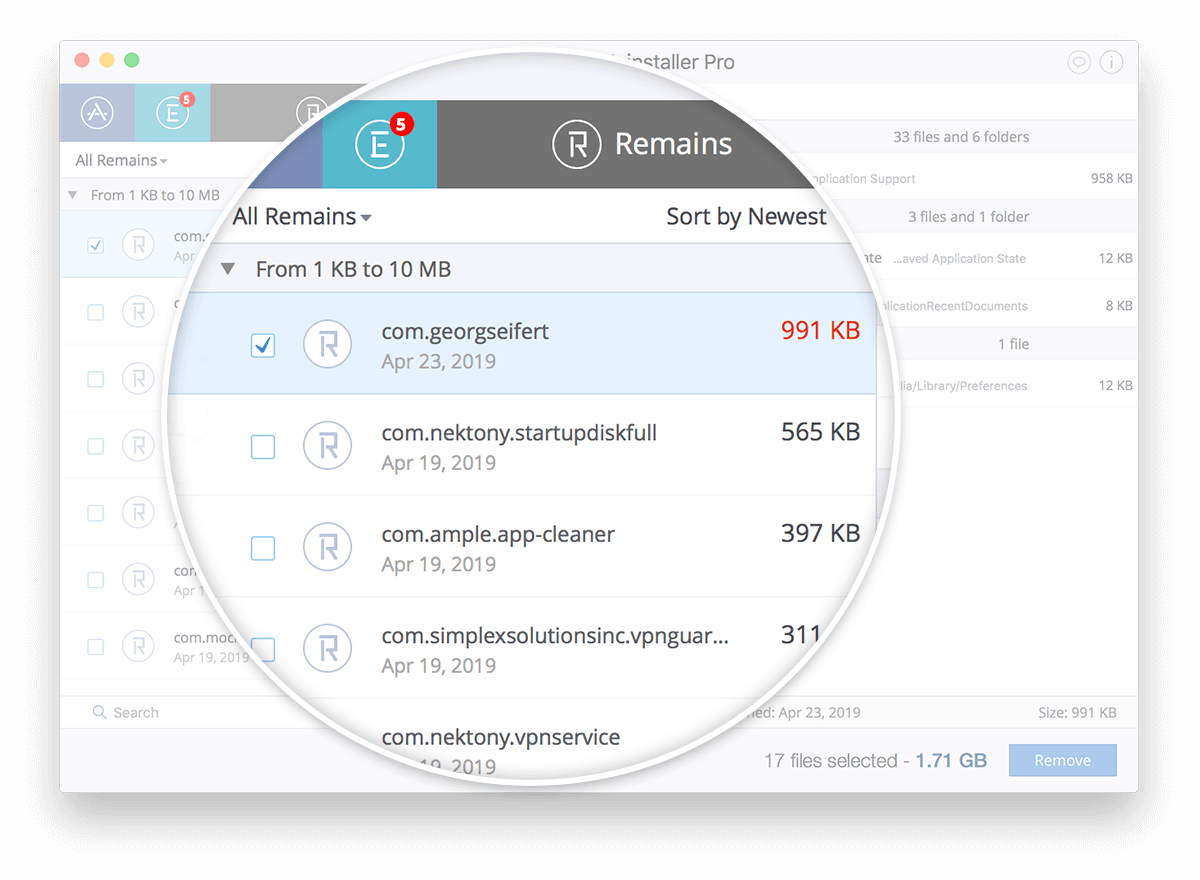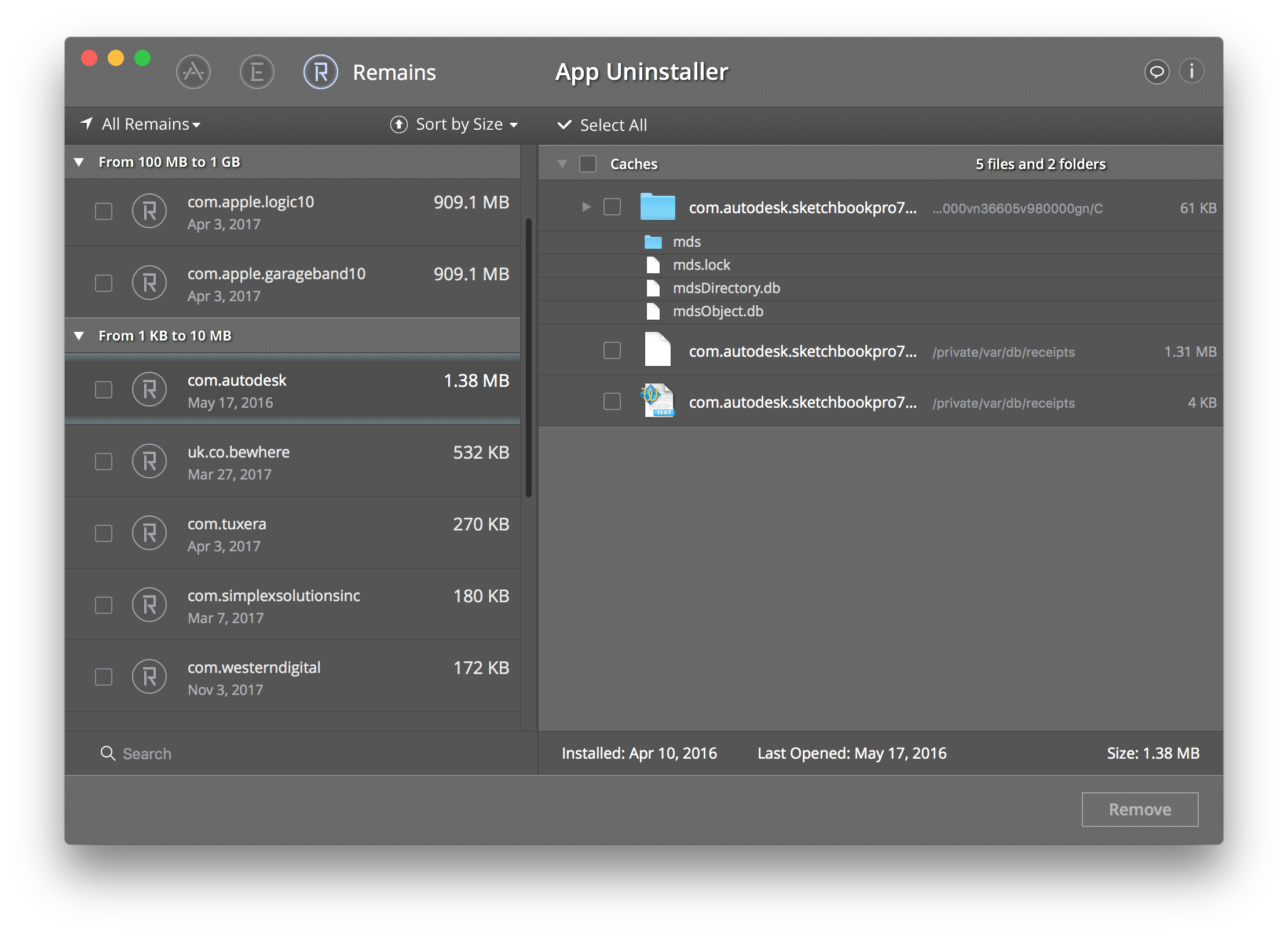

- MAC APP UNINSTALL HOW TO
- MAC APP UNINSTALL MAC OS X
- MAC APP UNINSTALL MANUAL
- MAC APP UNINSTALL FULL
- MAC APP UNINSTALL MAC
Repeat as necessary with associated component files returned by mdfind.Remove associated files from system locations with rm:.Launch Terminal and use the following syntax to find remnant components.Impatient? Command line expert and know exactly where to find junk? Here’s the condensed version, sans explanation – don’t jump to this if you don’t know what you’re doing:
MAC APP UNINSTALL MANUAL
Manual App & Component Removal in OS X via Terminal: The Condensed Version Sudo rm -rif ~/.Tofu/Preferences/Īgain this is an example, the ‘sudo rm -rif’ component is real but none of the directories or files are, it’s going to completely depend on what you find with mdfind and what you determine should be removed. Sudo rm -rif ~/Download/sketchydaemon-installer.tgz Sudo rm -rif /TheLibrary/LaunchDaemons/sketchyd Sudo rm -rif ~/Directory/Component/Removeme.pane Here’s an example of the rm with a sudo prefix to allow for administrative privileges, removing some fictitious files at imaginary locations (yes, these are made up to prevent copy/pasting and misuse of the ridiculously powerful rm command):

MAC APP UNINSTALL MAC
If you’re not incredibly confident in what you’re doing, you should at least back up the Mac before going any further, which is a good idea to do regularly anyway. You can then permanently delete the files with either the rm or srm command, if you’re not familiar with the rm command, it’s not reversible, so use with caution or you could unintentionally delete something important.
MAC APP UNINSTALL MAC OS X
Be sure you know exactly what file it is that you are deleting and why you are deleting it – as mentioned already, this is really intended for expert users with advanced knowledge of Mac OS X – you don’t want to accidentally remove the wrong thing. Remove only the related files that are appropriate to delete, there is no universal answer to this which is why you need to pay attention to the files that are found through mdfind utility. If what you’re looking to completely uninstall is a command line utility, it may have components in a variety of binary folders, whether /usr/bin /usr/sbin or others, Completely Removing Apps & Remnant Application Components
:max_bytes(150000):strip_icc()/008-uninstall-apps-on-mac-4159740-14cf4ed23d774f22b087e7aaf17a6d0d.jpg)
MAC APP UNINSTALL FULL
To reiterate, this may or may not be a full list of where related files are stored for a given application, this is why it’s important to pay attention to what is reported by the mdfind command. Application components may appear in a wide variety locations, including but not limited to the following file paths: app files, and remnant pieces of the software, like plist files, preferences, caches, daemons, and other accessory files and components associated with many apps in OS X. Generally speaking, you’re looking for binaries, the. Carefully example everything that is found, you may need to adjust your search parameters to determine if you’re finding all the necessary components of the application and/or software. This broad search should return everything on the Mac that is associated with the name of the application – this does not mean you should delete everything returned by the search though. * You can also use the broadest possible search without the -name flag but your results may be less accurate, whether that’s useful is up to youįor example, to find associated files and components with Teleport, the Mac OS X keyboard and mouse sharing utility for controlling multiple Macs with a single keyboard, you could use the following: The general syntax to use is the following command with the -name flag*: We’ll use Terminal and mdfind, though other command line search tools can also work for this purpose.
MAC APP UNINSTALL HOW TO
How to Find All Components of Apps / Software in Mac OS X If you’re an expert user who is very comfortable with this prospect and you just want some actionable command without any explanation as to what’s going on and why, you can jump to a condensed version below. We’ll break the steps into a few parts, first will be finding the app and related components, which requires some level of knowledge and discretion to determine what is related and what is not, and second, the actual removal of the appropriate files. Again, this is intended for advanced users only, and it is rarely necessary to remove an app or application components this way. This process method is much more technical, and relies on the terminal to accomplish the complete uninstall procedure. Another solution, which is best reserved for and intended for use by advanced Mac users only who are comfortable with the command line and have a deeper knowledge of Mac OS X, is the thorough manual removal of an app and all associated components, and that’s what we’ll cover here.


 0 kommentar(er)
0 kommentar(er)
